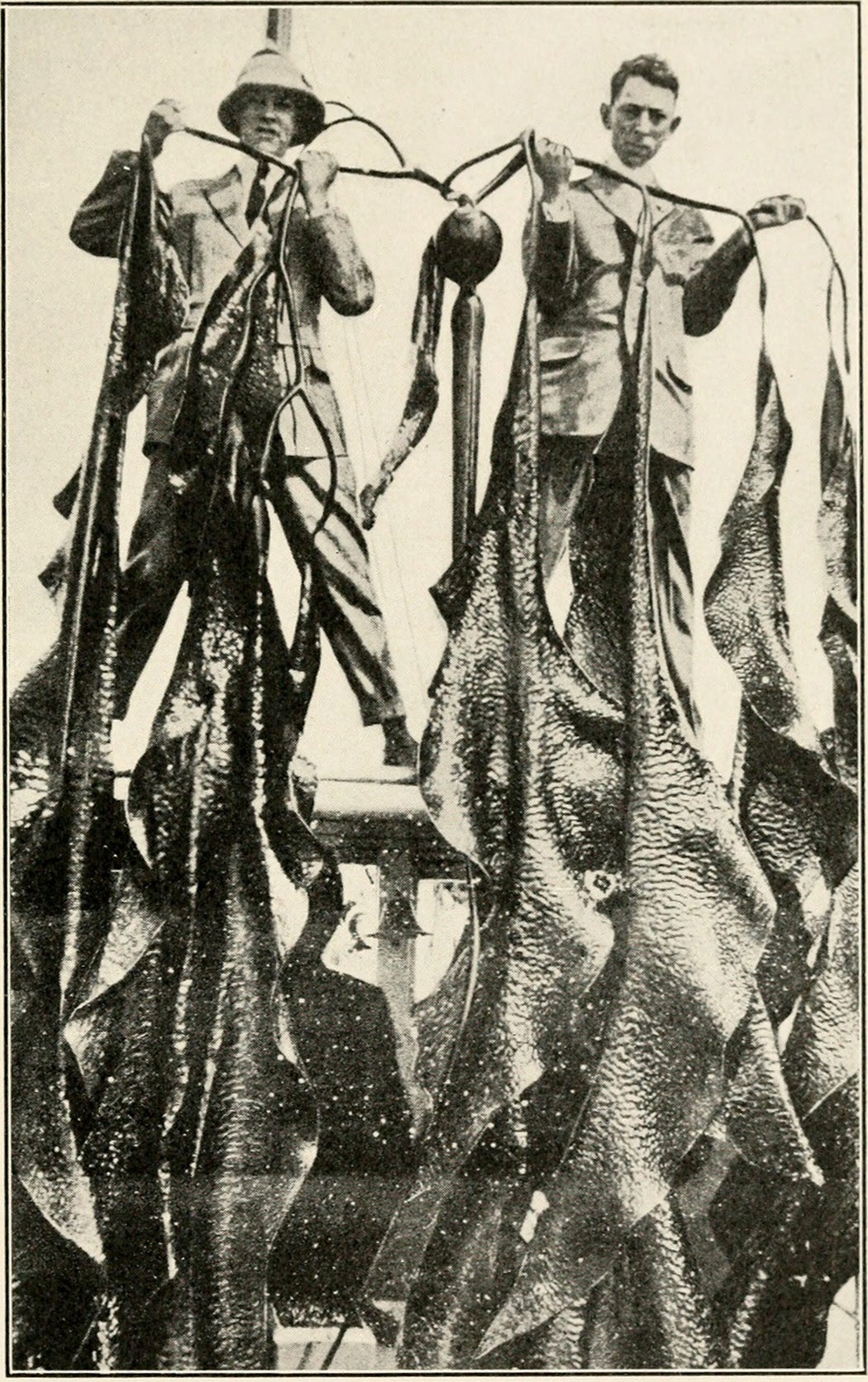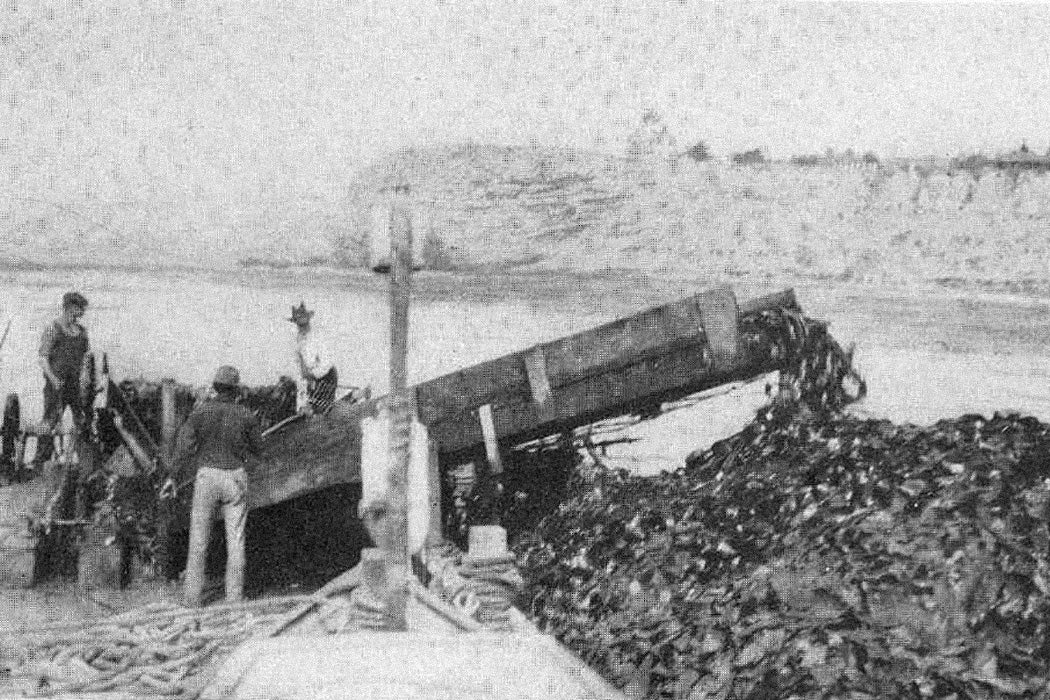At the outbreak of World War I, Germany largely controlled the world’s supply of mineral potash, an organic compound vital to the making of fertilizer, soap, glass, matches, and dyes. Potash was also of great strategic value because it was used to make gunpowder. The Imperial German embargo on the export of potash would be felt even among non-belligerents: the U.S. (neutral until April 1917) was the world’s largest consumer of potash fertilizers, particularly for growing cotton, corn, potato, beet, and tobacco. In 1913, the US imported $13 million worth of potash. In 1916, less than half a million dollars worth was imported, at double the pre-war price.
War often leads to technological innovations. In this case, the loss of German potash led to an American revival of an old European source of potash-making: burning seaweed for the alkali of the ashes. Scholar Peter Neushul explores the brief history of California’s kelp industry, jump-started in 1914 to meet the demand for potash.
“California’s World War I kelp industry was the largest ever created in the United States for the processing of plants from the ocean.”
Potash was traditionally made by leaching wood ash with water and then boiling the resulting lye down in pots, a process used for centuries. But in eighteenth century Scotland, dwindling wood supplies led to the birth of the coastal kelp kiln, in which seaweed gathered from the shore was burnt to ashes instead of wood.
The Scots called the fused seaweed ashes “kelp.” Seaweed-gathers and kelp-burners on the coasts of Britain, Ireland, and continental Europe from Norway to Spain made kelp to meet the demands of glass, soap, linen, and explosive manufacturers. Before vast sources of potash salts were mined in northern Germany, starting in 1852, kelp-burning was a serious business along many kilometers of Atlantic coastline.

“Kelp” is also the common name of the ribbony brown seaweeds found off the west coast of the United States. Within two years of the war’s start in 1914, eleven companies were processing Pacific kelp into potash. Most of these companies did it just as Europeans had done it: harvesting, drying, and burning it down to ashes. The Hercules Powder Co., however, developed a “completely new process of extracting not only potash but also acetone and numerous other chemicals.” Hercules ended up producing many tons of cordite and acetone, necessary for the production of smokeless gunpowder, from seaweed —most of it sold to the United Kingdom’s war effort. By 1918, the last year of the war, kelp was the second largest source of potash in the U.S., after “natural brines and salt lakes.”
As Neushul details, the potential of the “forests” of West Coast kelp had been explored decades before the outbreak of the Great War. Chemists and government surveys knew of the potassium rich off-shore sources of kelp, but the cost of extraction and processing couldn’t compete with the mineral version, until the war cut off cheaper supplies. No thought seems to have been given to the ecological consequences of harvesting this foundation of a rich and complex ecosystem.
The boom, however, was followed by a bust. The revival of German and French exports after the war made a quick end to the California industry. Neushul writes that the “kelp companies formed one of the largest industries ever created for the processing of raw materials from the ocean,” but they didn’t realize the full economic potential of their raw material. In fact, Hercules, so successful in extracting new chemicals from giant kelp, failed to see that the alginates extracted from seaweed would eventually become a multi-million dollar industry of their own.
Weekly Newsletter
Also known as algin or alginic acid, alginates are edible polysaccharides used in the food, paper, textile, and pharmaceutical industries. If you’ve ever had a dental impression made, it was probably formed from an alginate powder mixed with water.
The culinary uses of seaweed are best known, but there’s a larger history of the human exploitation of seaweed that has yet to be written. Very few other things, after all, can be turned into food crops, beautiful glass work, deadly explosives, and dental media.







